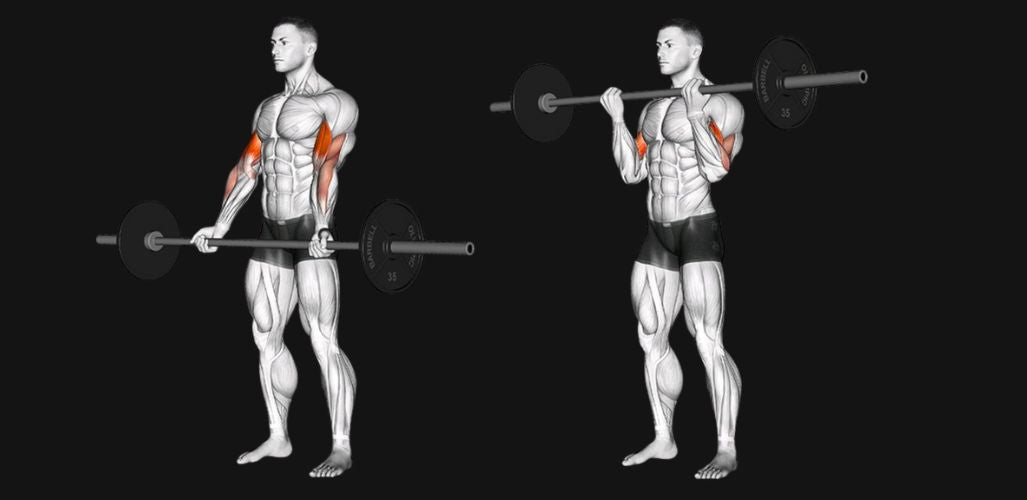
Barbell Curl: The Complete Guide to Bigger, Stronger Biceps
Looking to turn spaghetti arms into steel pipes? The barbell curl is your go-to for bigger, stronger biceps, better grip, and functional strength. With best-selling fixed barbells, you’ll curl smarter, lift heavier, and sculpt arms that actually turn heads—read on to master every variation and technique.
Why Do Barbell Curls?
What is a Barbell Curl?
The barbell curl is straightforward: grip a barbell, curl it toward your shoulders, and work your biceps.
It’s the foundation of barbell bicep curl routines and one of the most reliable ways to increase arm size and strength.
Who Should Do Barbell Curls?
Anyone looking for bigger, stronger biceps can benefit.
From beginners learning standing barbell curls to advanced lifters experimenting with eccentric barbell curls, it suits all skill levels.
Benefits of Barbell Curls
Barbell curls aren’t just for show.
They improve forearm strength, enhance grip, and even help with daily lifting tasks like grocery bags or moving furniture.
Muscle Growth and Definition
Consistent curling produces fuller, well-shaped biceps.
Grip and Forearm Strength
Your grip gets stronger, aiding other lifts like rows or pull-ups.
Functional Strength for Daily Activities
Stronger arms mean easier everyday tasks, giving you practical benefits beyond the gym.
Barbell Curl Muscles Worked
Primary Movers — Biceps Brachii
The barbell curl targets both heads of the biceps — short and long — giving your arms balanced growth.
Secondary Muscles — Brachialis, Brachioradialis, Forearms
Supporting muscles like the brachialis and brachioradialis add thickness and stability.
How Grip Affects Activation
Grip choice can change the focus of your curl.
EZ Curl Barbell vs Straight Barbell
The EZ curl barbell eases wrist strain, while a straight bar maximizes raw biceps contraction.
Reverse Barbell Curl Biceps Emphasis
Reverse curls shift tension to forearms and the brachialis, helping thicker, fuller arms develop.
How to Do the Barbell Curl Properly
Step-by-Step Form Guide
Standing Barbell Curl Setup
Stand tall, feet shoulder-width apart.
Grip the bar comfortably, elbows tucked, back straight.
Lift slowly, controlling the movement without swinging.
Seated Barbell Curl Technique
Sitting down limits momentum and forces your biceps to do all the work.
Curl Barbell Weight Recommendations
Start light with 20kg (44 lbs).
Work your way up to 40 lbs or more as strength improves.
Common Mistakes to Avoid
Swinging the Bar
Momentum steals the tension from your biceps. Curl with control.
Elbows Drifting Forward
Keep elbows at your sides. Moving them forward reduces effectiveness.
Using Too Heavy Weight
Heavier isn’t always better. Poor form can lead to injury and slow progress.
Barbell Curl Variations
Standard Barbell Curl (BB Curl)
The classic move for overall biceps size.
EZ Curl Barbell
Gentler on the wrists while still targeting both biceps heads.
Reverse Barbell Curl
Focuses on forearms and brachialis, adding arm thickness.
Drag Curl
Keep the bar close to your body for maximum peak contraction.
Preacher Curl / Barbell Preacher Curl
Great for isolating the biceps and preventing swinging.
Seated Barbell Curl
Limits momentum, emphasizing strict form.
Eccentric Barbell Curl
Lower the bar slowly to maximize tension and muscle growth.
Alternatives to Barbell Curls
-
Hammer Curl — targets brachialis and forearms.
-
Chin-Ups — bodyweight alternative for arms and back.
-
Dumbbell Curls — useful for correcting imbalances and working one arm at a time.
Training & Programming Tips
Sets and Reps
-
Strength: 4–6 reps with heavier weight.
-
Hypertrophy: 8–12 reps, moderate weight.
-
Endurance: 15–20 reps, lighter weight.
When to Add Barbell Curls in Your Routine
Usually after compound lifts like rows or bench presses.
Biceps are easier to isolate once larger muscles are fatigued.
Can You Rely Solely on Barbell Curls?
No. Variety prevents plateaus and ensures balanced arm development.
Mix curls, grips, and alternative exercises for best results.
Progressions to Increase Weight
Pause reps, slow negatives, and small incremental increases help you lift heavier safely.
Equipment & Brands
Choosing the Right Barbell
-
Straight Bar, EZ Curl Bar, Fixed Curl Barbell.
-
Olympic EZ Curl Barbell is ideal for advanced lifters.
Best Weight Plates
Rubber, urethane, bumper, and cast iron plates all work well for curls.
Top Brands
-
Body Solid, Escape Fitness, Intek Strength, TAG Fitness, TKO, Troy, York, VTX.
Bulk Discounts & Weekly Promos
We offer custom bulk discounts and weekly 5% off promotions.
Combine our best-selling barbells (20–115 lbs) with weight plates (2.5–100 lbs) for full arm gains at excellent value.
Safety & Recovery Tips
Warm-Up and Stretching
Loosen shoulders, biceps, and forearms before lifting to prevent injury.
Avoiding Elbow and Wrist Strain
Keep wrists neutral and elbows tucked while curling.
Recovery Tips
Rest 48 hours between biceps sessions.
Eat enough protein and rotate exercises to prevent overuse.
Final Takeaway — Mastering Barbell Curls
The barbell curl is a cornerstone for bigger, stronger biceps.
Mix proper form, variations, and grips for maximum results.
Check out our best-selling fixed barbells (20–115 lbs) and Olympic weight plates (2.5–100 lbs) with bulk discounts and weekly 5% off promos.
Curl smart, lift safely, and watch your arms grow.


Leave a comment